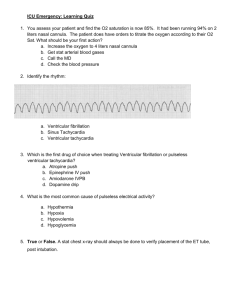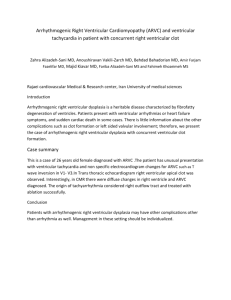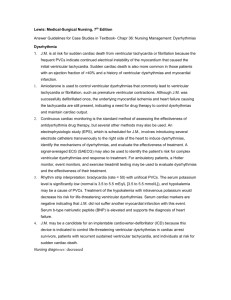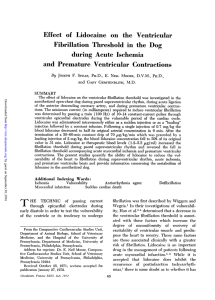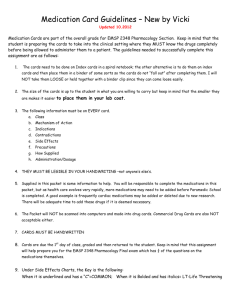Med 15 - Daves EMS History
advertisement
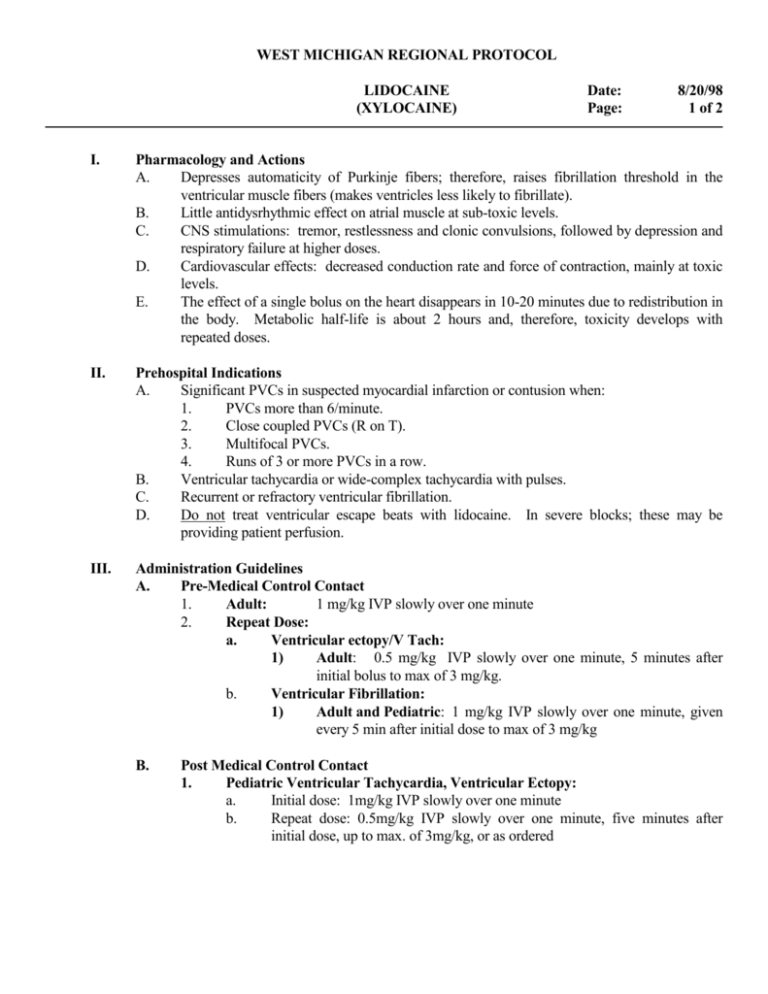
WEST MICHIGAN REGIONAL PROTOCOL LIDOCAINE (XYLOCAINE) Date: Page: 8/20/98 1 of 2 I. Pharmacology and Actions A. Depresses automaticity of Purkinje fibers; therefore, raises fibrillation threshold in the ventricular muscle fibers (makes ventricles less likely to fibrillate). B. Little antidysrhythmic effect on atrial muscle at sub-toxic levels. C. CNS stimulations: tremor, restlessness and clonic convulsions, followed by depression and respiratory failure at higher doses. D. Cardiovascular effects: decreased conduction rate and force of contraction, mainly at toxic levels. E. The effect of a single bolus on the heart disappears in 10-20 minutes due to redistribution in the body. Metabolic half-life is about 2 hours and, therefore, toxicity develops with repeated doses. II. Prehospital Indications A. Significant PVCs in suspected myocardial infarction or contusion when: 1. PVCs more than 6/minute. 2. Close coupled PVCs (R on T). 3. Multifocal PVCs. 4. Runs of 3 or more PVCs in a row. B. Ventricular tachycardia or wide-complex tachycardia with pulses. C. Recurrent or refractory ventricular fibrillation. D. Do not treat ventricular escape beats with lidocaine. In severe blocks; these may be providing patient perfusion. III. Administration Guidelines A. Pre-Medical Control Contact 1. Adult: 1 mg/kg IVP slowly over one minute 2. Repeat Dose: a. Ventricular ectopy/V Tach: 1) Adult: 0.5 mg/kg IVP slowly over one minute, 5 minutes after initial bolus to max of 3 mg/kg. b. Ventricular Fibrillation: 1) Adult and Pediatric: 1 mg/kg IVP slowly over one minute, given every 5 min after initial dose to max of 3 mg/kg B. Post Medical Control Contact 1. Pediatric Ventricular Tachycardia, Ventricular Ectopy: a. Initial dose: 1mg/kg IVP slowly over one minute b. Repeat dose: 0.5mg/kg IVP slowly over one minute, five minutes after initial dose, up to max. of 3mg/kg, or as ordered WEST MICHIGAN REGIONAL PROTOCOL LIDOCAINE (XYLOCAINE) Date: Page: 8/20/98 2 of 2 IV. Side effects and Special Notes A. May produce: 1. CNS disturbances: sleepiness, dizziness, disorientation, confusion, convulsions. 2. Hypotension 3. Decreased myocardial contractility and increased A-V block at toxic levels only. 4. Rare instances of sudden cardiovascular collapse and death. B. Toxicity is increased in elderly patients. Since lidocaine is metabolized in the liver, elderly patients, patients with hepatic diseases, shock or congestive heart failure will not break down the drug rapidly. Consider one-half dose for boluses and drip rate in these patients. Contact medical control for dosage direction in those cases. C. PVCs should be treated only when significant and premature ventricular beats are encountered in the setting of acute angina, MI, or cardiac contusion. PVCs generated by hypoxia will respond to Lidocaine and the wrong life-threatening illness will be treated. EVERYONE WITH PVC's DOES NOT NECESSARILY NEED LIDOCAINE. D. A lidocaine drip is done by Medical Control order only. The only time that you may receive an order is if you have a long transport time and or at the maximum dose for IVP. The standard dose for a lidocaine drip is 2.0 - 4.0 mg/min. (30-60 gtts/min.) of a pre-mixed 2.0 gm in 500 ml IV bag. VI. Utilization A. (II.C.5.g.) B. (II.C.5.h.) C. (II.C.5.i.) LIDOCAIN 7/2/98 Ventricular Ectopy Ventricular Fibrillation Ventricular Tachycardia



